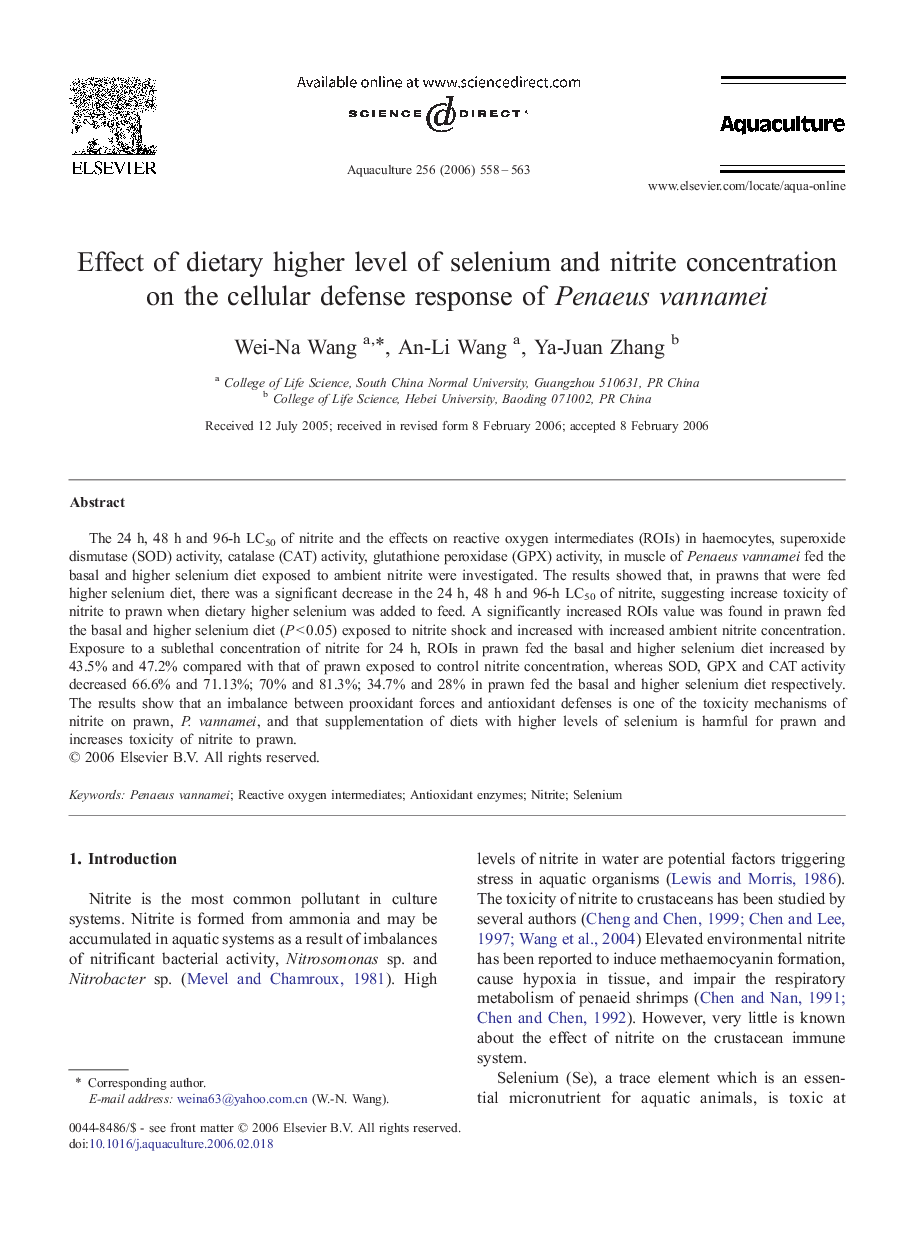| Article ID | Journal | Published Year | Pages | File Type |
|---|---|---|---|---|
| 2425955 | Aquaculture | 2006 | 6 Pages |
The 24 h, 48 h and 96-h LC50 of nitrite and the effects on reactive oxygen intermediates (ROIs) in haemocytes, superoxide dismutase (SOD) activity, catalase (CAT) activity, glutathione peroxidase (GPX) activity, in muscle of Penaeus vannamei fed the basal and higher selenium diet exposed to ambient nitrite were investigated. The results showed that, in prawns that were fed higher selenium diet, there was a significant decrease in the 24 h, 48 h and 96-h LC50 of nitrite, suggesting increase toxicity of nitrite to prawn when dietary higher selenium was added to feed. A significantly increased ROIs value was found in prawn fed the basal and higher selenium diet (P < 0.05) exposed to nitrite shock and increased with increased ambient nitrite concentration. Exposure to a sublethal concentration of nitrite for 24 h, ROIs in prawn fed the basal and higher selenium diet increased by 43.5% and 47.2% compared with that of prawn exposed to control nitrite concentration, whereas SOD, GPX and CAT activity decreased 66.6% and 71.13%; 70% and 81.3%; 34.7% and 28% in prawn fed the basal and higher selenium diet respectively. The results show that an imbalance between prooxidant forces and antioxidant defenses is one of the toxicity mechanisms of nitrite on prawn, P. vannamei, and that supplementation of diets with higher levels of selenium is harmful for prawn and increases toxicity of nitrite to prawn.
